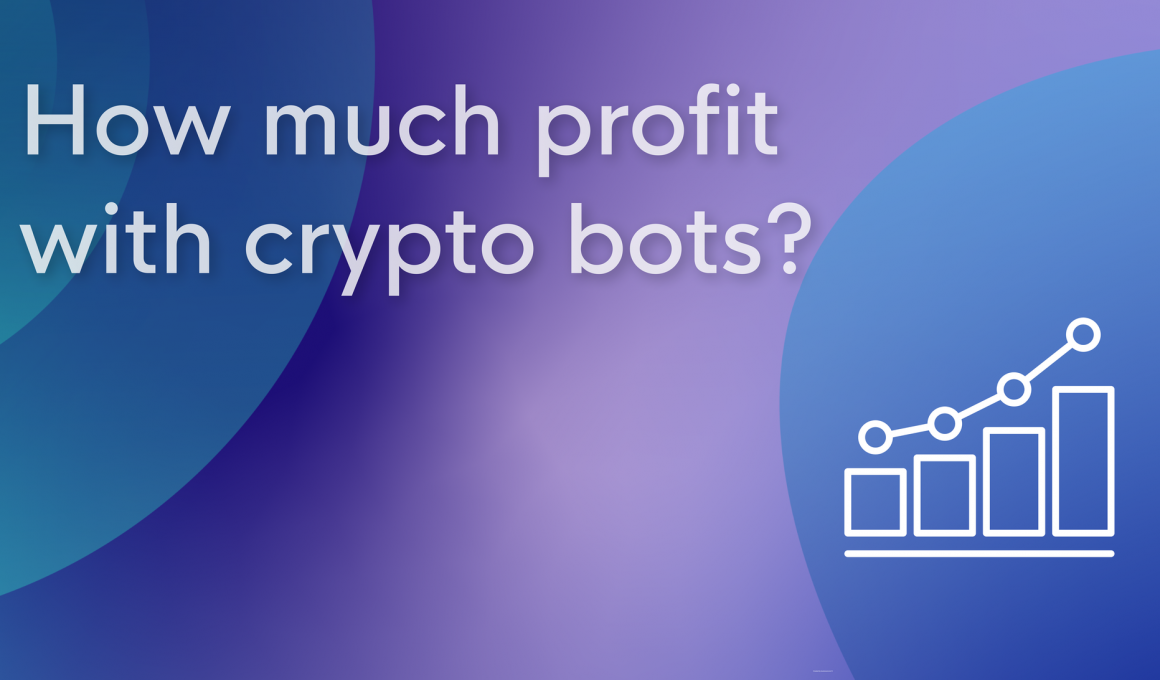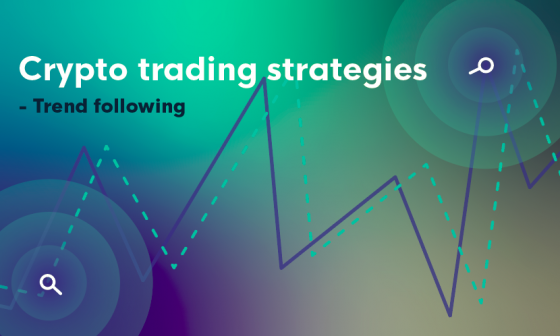Algorithmic trading in crypto makes perfect sense: there’s plenty of volatility and the market never sleeps. Profiting from big moves may depend on the tools you’re using whenever you’re not watching the chart.
We’ve seen traders make incredible profits with bots they set up in a surprisingly short time. We’ve also seen others that have no faith in them, and it’s not really their fault, despite the excellent reasons to use bots in your trading.
Crypto bots have become much more available and with that promises like “make 30% every day” or “the bot that beats the market every single month” plastered all over the web. This pushes (especially less experienced) traders to think about the profits before they do about the process. A recipe for disaster.
So how do you take control and have any foresight into how much you can profit with crypto bots? The questions below should give you a pretty good idea where you stand and hopefully direct how to continue. If you answer “no” to most or all of them it’s time to regroup. If your answers are all or most resounding yeses, you already know the number as you’re in control of your process.
What to consider when estimating profits when trading with a bot:
1. Do you have any idea what goes into the bot?
If you don’t and you’re working with “double your money in a week,” you’re not going to. Different strategies work with different efficiency in different types of markets. It matters if we’re ranging or trending – with the wrong type of strategy you may be leaving money on the table, or worse be losing money.
With no insight into what goes into the bot, it cannot be improved, nor can you change your approach to the right one when the market changes.
In some cases some of the information about the strategy may be secret, but you still can have a solid insight into the composition as we discuss next.
2. Do you have historical performance or backtesting results?
Not just “we made 40% last month” but key items like maximum drawdown, win to loss ratios, average profit per position, average duration of a position? This help you know if the strategy is working correctly, does it fit your needs, and risk tolerance. For a risk averse person, a strategy with 50% potential drawdown can be torturous. If you want to day-trade and are given a long-term swing trading strategy you will be disappointed. If the strategy should have 2 wins for every loss and you’re seeing something completely different you might have an issue.

The fact that key metrics like these are often omitted by those that create bots goes to say how little data is used in the space. Which is why using it can be your edge.
To add on to the first point, you can do your own backtesting, (and you should) but first you need to know what goes into the strategy.
3. Do you know much about trading?
Or strategy creation? Be honest with yourself. Running a bot is nothing more than perfectly executing a strategy. If you really don’t know anything about it, it would be tough to make money off it.
The great news is that if you’re starting out creating a bot is a fantastic experience that can expedite your trading career. In fact, all you need to do is:
- take a few trading presumptions or strategies (when X happens I will buy, then at Z I will sell)
- test them and try to improve them
- automate your winners

That’s literally it! Putting in this bit of work will put you way ahead of the competition. Trade that strategy for a while and see what you like don’t like about it. Then try to optimise it.
It’s the only job traders have – the buying and selling is just clicking buttons and can be done by anyone. It’s the planning phase that will set you on your way to long-term profitability.
4. Do you have a way to track your trading?
Sure, you can get your trade history from the exchange but it’s not going to help you in quickly crafting statistics and calculating drawdown or zooming in on specific periods in terms of your performance.
The point of running a bot is to make execution easy, but the same goes for analysis. You need to know in which periods your strategy is thriving and when it is stagnant. And crucially if your strategy is beating the market or just holding Bitcoin.

If not, then you’re just giving money to exchanges for no reason. However, if you have analytics, you will know what you can improve and what is a priority. These can come from an Excell sheet, a program you set up or a ready-made platform like CLEO.one, but do have it set up before live trading. Otherwise, you will have a ton of work to backtrack on.
5. Do your profits cover the cost of buying or creating and running the bot?
This is where all the previous research comes in. If you don’t have an answer to this but are just starting out it’s no problem. Start small and build from there. Once you have an idea you are confident in, you can scale up. If you can make profits on $100 account, you can make them on a bigger one.
The issue is with shady bots and big promises that push you to invest thousands from the start. Don’t jump in like that before you see extended results.
If you are the one that is doing the creation and coding it might take a ton of time if you’re programming, gathering testing data, setting up connections, and analytics.
The best option is to use a free platform that needs no coding and is free. They do exist and a good choice will come with analytics, great backtesting and an easy way to optimise.
If these 5 questions leave you with a lot to think about, good. That’s the path to long-term profitability. The process here will have you develop and excel at trading, rather than being stuck on blindly following others.
With a good platform like CLEO.one you can save 80% of the time it takes to develop, backtest an idea and then automate it with a single click. No need to gather data or code anything. Feel free to use whatever you fancy, but make sure you don’t end up paying for something that does not return your investment. Or worse leave you stagnant and feeling like you’re not progressing.
With a Binance, Bitpanda PRO or HitBTC account you can create and run custom bots for free on CLEO.one.







